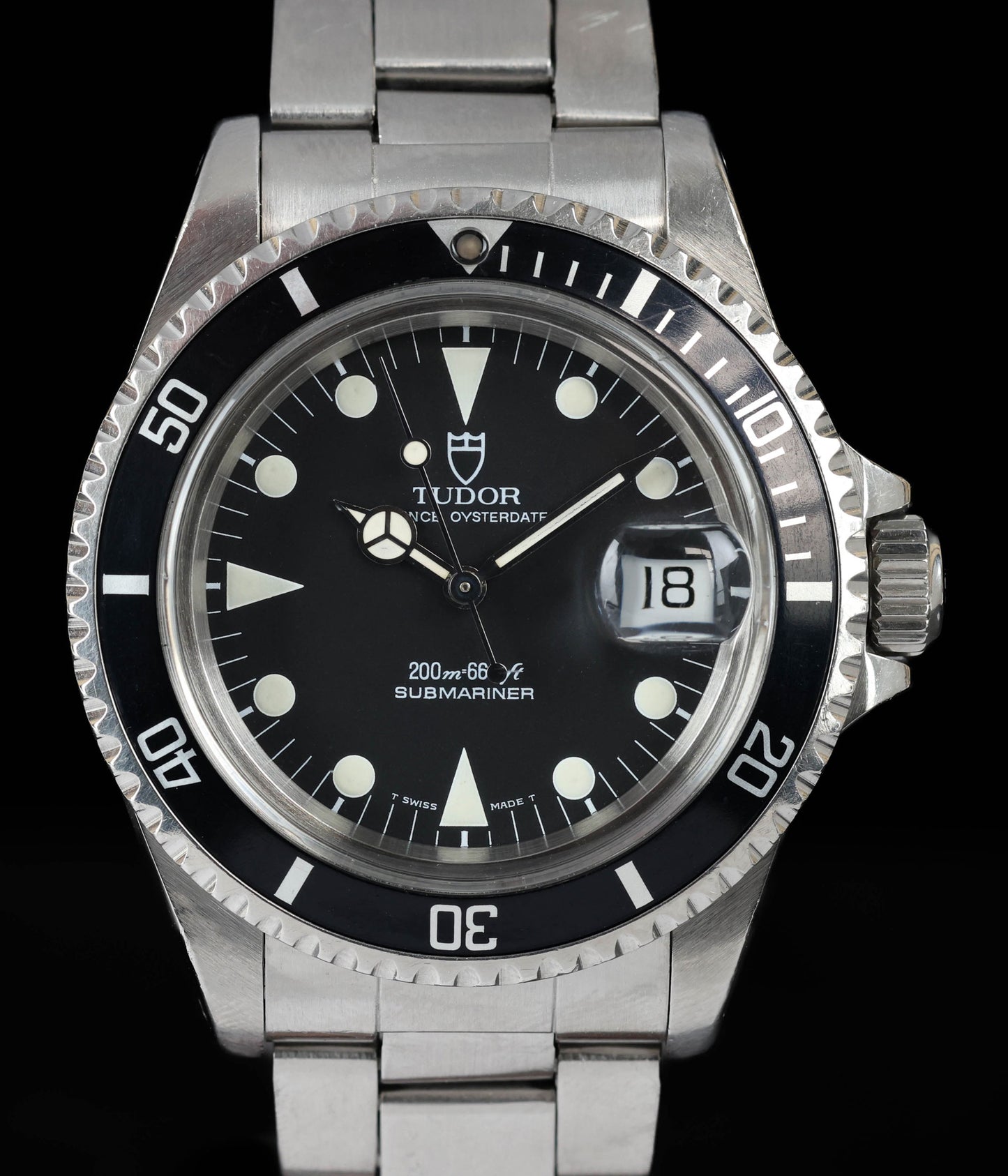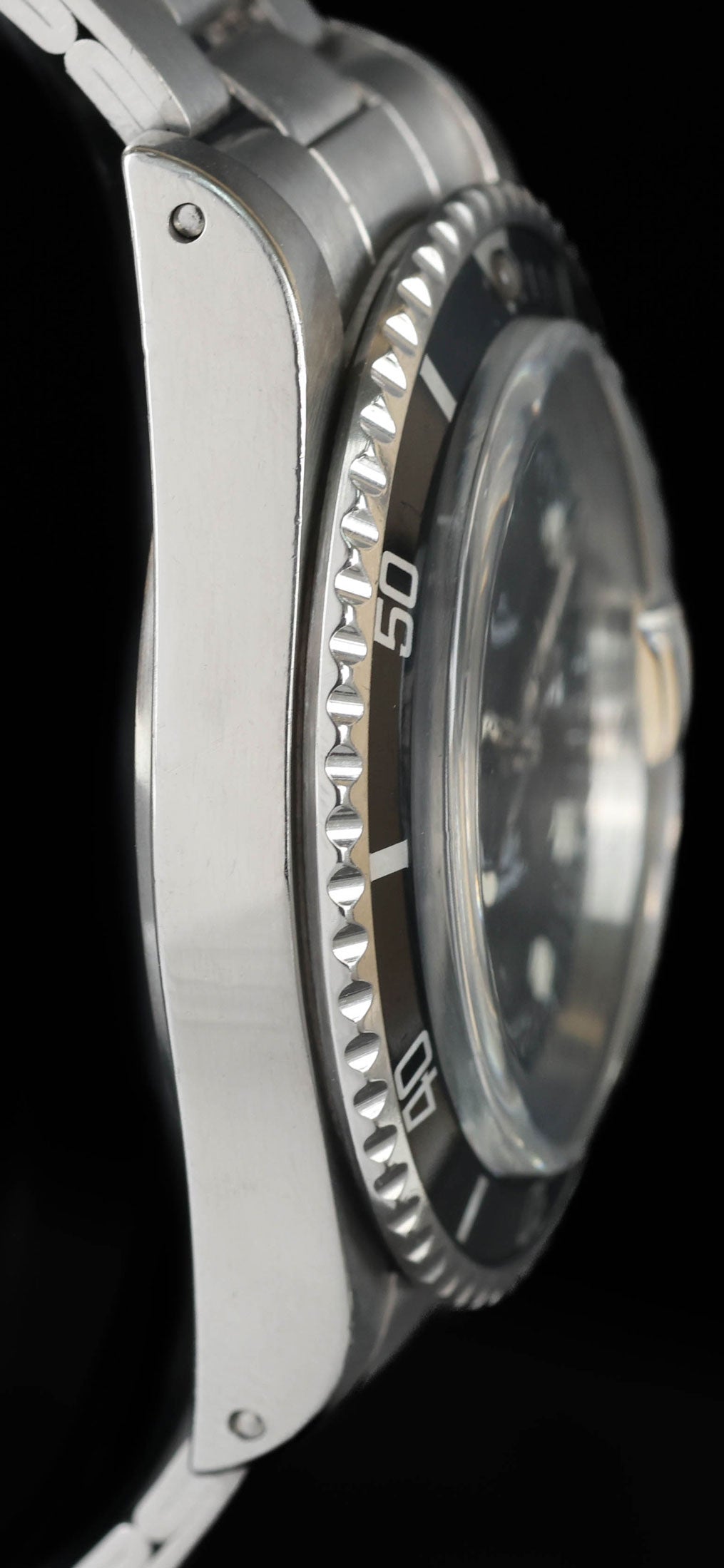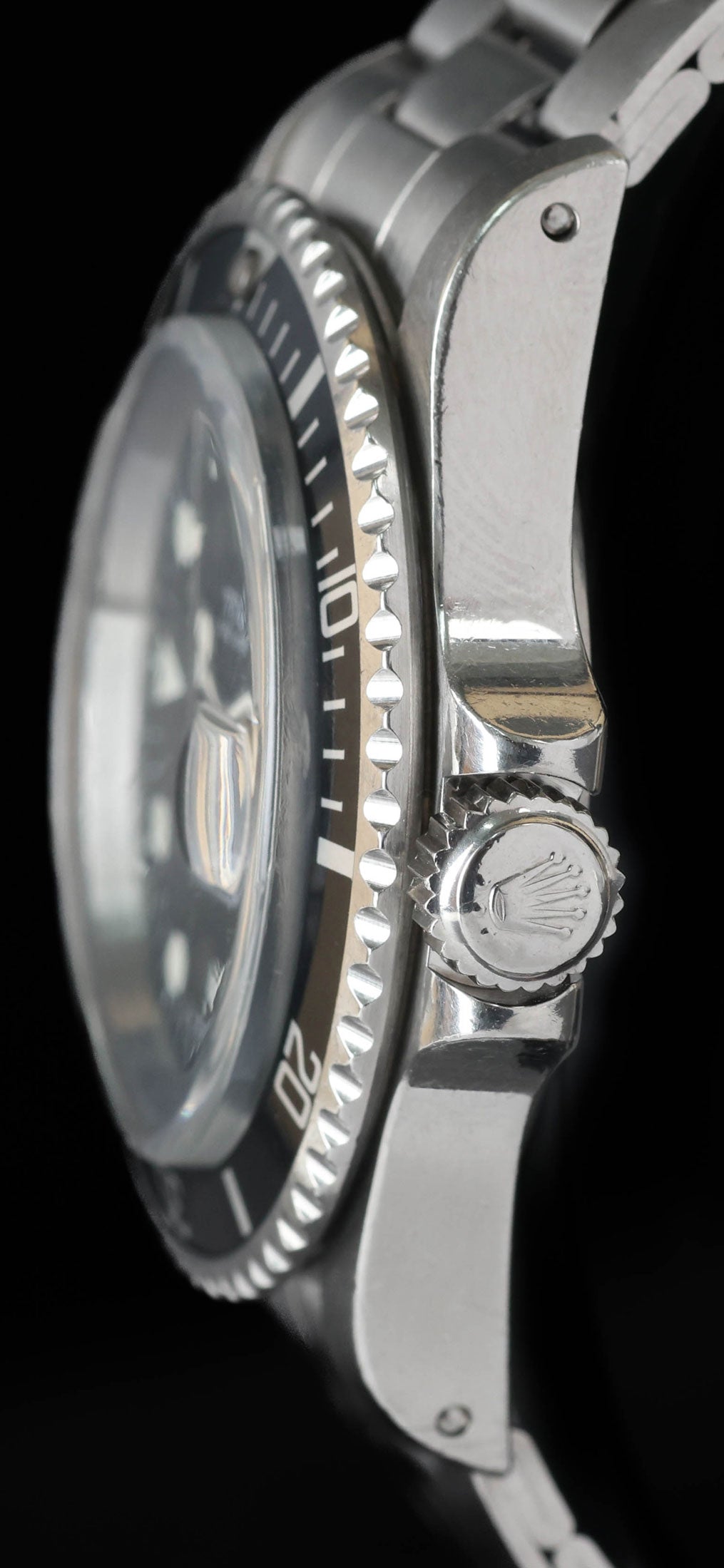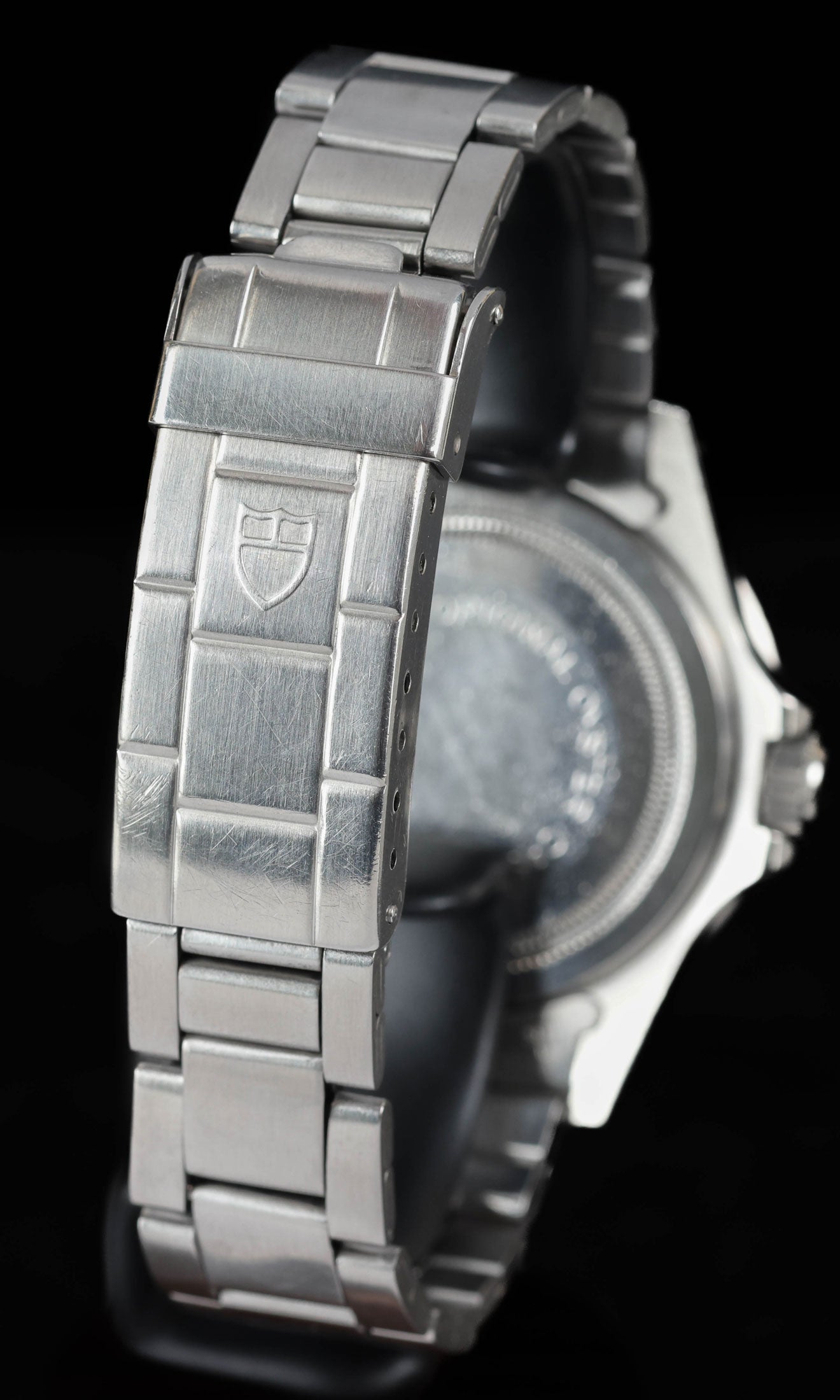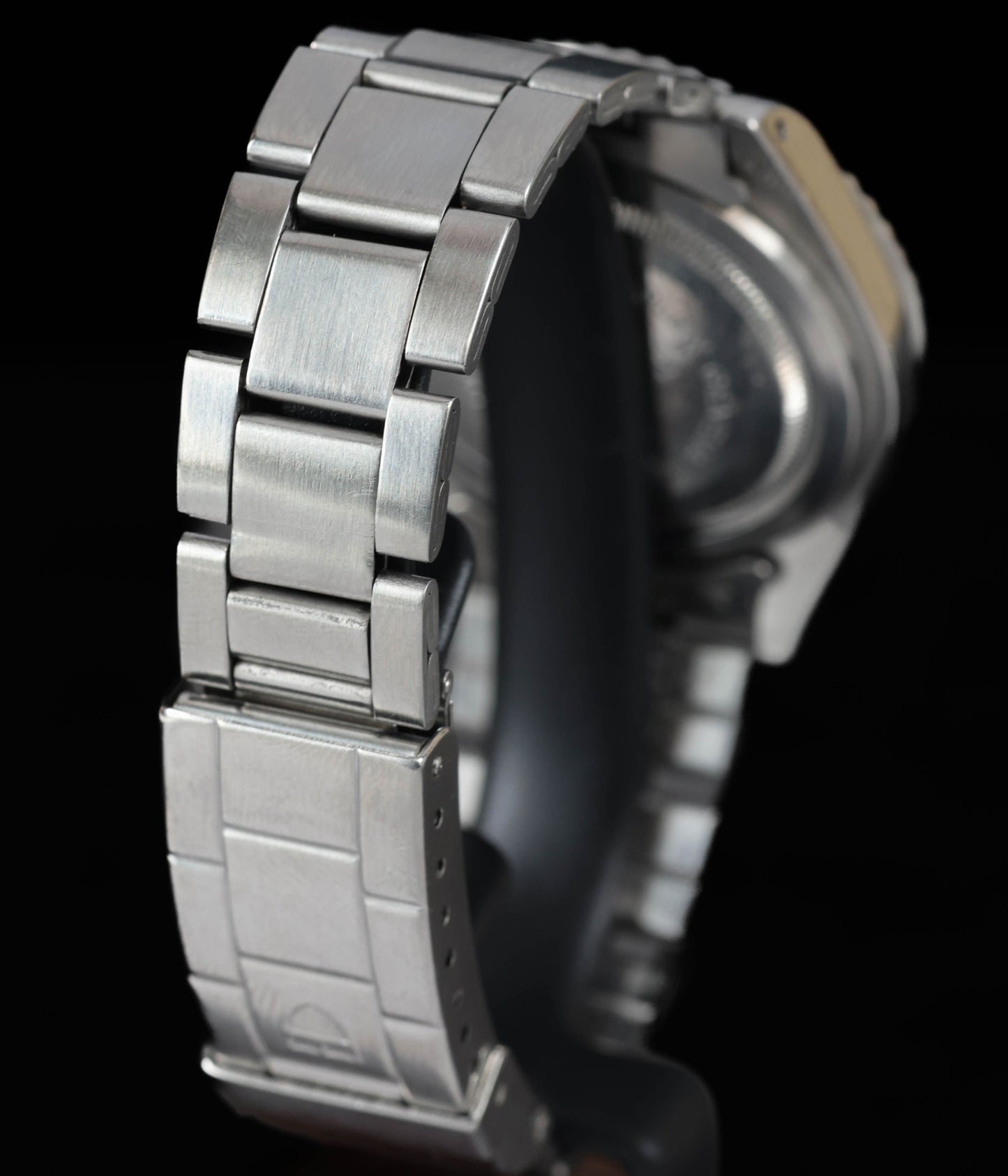Crown Vintage
Tudor Submariner 79090 40MM 1992
Tudor Submariner 79090 40MM 1992
Couldn't load pickup availability
This is an excellent example of a Tudor Submariner. The stainless steel case is in good condition, with factory chamfers clearly visible. There are no major dents or scratches, and the finish remains well-preserved. The stainless steel bracelet is in good condition, showing only light hairlines consistent with gentle wear and retaining solid integrity. The dial and hands are flawless, with no signs of discoloration or blemishes, and the luminous material remains intact. Overall, this Submariner presents as an excellent, well-preserved example.
Share
Why we love this watch
Why we love this watch
A Dive into Heritage: The Tudor Submariner 79090
Few watch brands possess the dedicated following of Tudor. Launched by Rolex founder Hans Wilsdorf in 1926, Tudor was originally conceived as a more affordable alternative to Rolex, while maintaining many of the quality standards that collectors and enthusiasts have come to expect from its sister brand. Over the decades, Tudor forged its own path, crafting timepieces that stood out not simply as “Rolex alternatives” but as unique statements of design and value. Among its most iconic models is the Tudor Submariner lineup, which has a storied history of its own. Among these is a particularly sought-after reference from the 1990s: the Tudor Submariner 79090. This reference encapsulates both the vintage charm that first endeared Tudor’s diving watches to collectors and the robust, modern functionality that continues to define Tudor timepieces today. In what follows, we’ll take a closer look at the Tudor Submariner 79090, exploring its origins, key features, and appeal in the collectors’ market.
The Birth of the Tudor Submariner
Tudor’s foray into dive watches began in 1954, a pivotal year that saw the launch of the original Tudor Oyster Prince Submariner (ref. 7922). Taking much of its inspiration from the Rolex Submariner that debuted a year earlier, Tudor’s new dive watch embraced many of the same design elements: a robust stainless steel Oyster case, a rotatable bezel, and strong legibility that made it suitable for use in professional diving or other underwater pursuits. From the very beginning, Tudor made clear that its Submariner model was not merely a derivative product. Rather, the brand incorporated its own finishing touches and harnessed reliable third-party movements—often from ETA—to keep costs more accessible while maintaining high-quality standards.
Over the ensuing decades, the Tudor Submariner evolved with incremental changes, weaving in new references, dial aesthetics, and technical enhancements. Watches such as the Tudor Submariner 79090 served as key signposts of that evolution. By the time this reference came to market in the late 1980s, the Tudor Submariner line had acquired a dedicated base of enthusiasts, thanks in part to its close resemblance to some of Rolex’s classic Submariners and partly for its proven reliability. But it was also forging new territory in design choices—like snowflake hands on earlier references, or subtle dial variations—and these unique traits collectively contributed to Tudor’s growing identity.
The Emergence of Reference 79090
The Tudor Submariner 79090 first appeared around 1989 and was produced into the early 1990s. It was among the last generation of Tudor Submariners before the line was discontinued in the mid-1990s. Consequently, it holds a special place in Tudor’s history: a transitional watch that bridges the brand’s earlier, near-identical synergy with Rolex parts and the subsequent era when Tudor would really begin establishing its own distinct design language.
By the time the 79090 debuted, the famed “snowflake” hands of earlier Tudor Submariners had been replaced with a more traditional Mercedes-style handset, bringing the watch visually closer to the Rolex Submariner. Yet, the 79090 also showcased a few aesthetic flourishes that separate it from its Rolex counterparts. Chief among these were subtle dial differences, such as “Tudor Prince Oysterdate” text, the presence of unique minute markers, and the characteristic shield or rose logo in place of Rolex’s crown. Additionally, the watch often sported an interesting array of bezel color variations, with some references featuring red text on the bezel insert or different lume applications.
Design and Technical Details
The Tudor Submariner 79090 is a robust tool watch measuring around 39-40mm in diameter—comfortably sized for a diver of its day and still very wearable by modern standards. Its stainless steel case, fashioned using the famous Oyster construction, was effectively water-resistant to depths of 200 meters (660 feet). While some might compare that limit to more contemporary dive watches that boast 300 or 500 meters of water resistance, the 200-meter rating was more than adequate for scuba diving at recreational depths and demonstrates the watch’s professional intent.
A key difference between Tudor Submariners and Rolex Submariners is found within the movement. Rather than using in-house Rolex calibres, Tudor employed robust ETA calibres. In the 79090, the movement is often cited as an ETA 2824-2, an automatic that has proven itself in countless other watches. Known for reliability and ease of servicing, the ETA 2824-2 gave the Tudor Submariner a mechanical heart that any skilled watchmaker could maintain without requiring unique Rolex parts. This comparative simplicity was—and remains—part of Tudor’s charm: a watch built to be used and easily serviced, making it exceptionally appealing for those who prefer practicality.
A Closer Look at the Aesthetic Cues
Although Tudor often hewed closely to the design language of Rolex, the brand was not content merely to be a carbon copy of its older sibling. Instead, it found ways to visually differentiate its Submariner line. The 79090, for example, carried forward certain distinctive dial markings, such as the Tudor shield logo (though earlier Tudor Submariners used a rose logo). It also continued the “Prince Oysterdate” text under the brand name on the dial, reminding wearers of the watch’s lineage and water-resistant Oyster case design.
One of the more noteworthy aspects for enthusiasts is the bezel insert. While some references of the Tudor Submariner featured prominent red or blue inserts, the 79090 also arrived in black, bearing a red triangle marker at the 12 o’clock position on certain pieces. This provided an extra dash of visual interest and helped set these Tudor divers apart. Over time, these bezel inserts can fade, introducing unique shades of gray, blue, or “ghost” tones that create variation among vintage pieces. This nuance makes each individual watch a living artifact of its own history—an aspect that vintage watch collectors find irresistible.
The 1990s and the End of an Era
The 1990s was a transitionary decade for Tudor. After decades of producing Submariner models in close parallel with Rolex, Tudor began exploring new design avenues to carve out a distinct identity. Ultimately, the Submariner line was retired in 1999, and reference 79090 was among the final references to bear the Submariner name. Tudor would later concentrate on different lines such as the Hydronaut and, more recently, the Black Bay series, which would become a major success and a modern icon in its own right.
However, for those who appreciate Tudor’s vintage era, the 79090 stands as an ideal representation of Tudor’s final stretch in the Submariner lineage: a watch that encompassed all the reliability, classical design elements, and brand synergy that defined the earlier Tudor-Rolex relationship, right before Tudor turned decisively toward a new chapter in its story.
Collectibility and Market Value
From a collector’s perspective, the Tudor Submariner 79090 offers an intriguing combination of historical significance and wearable versatility. It carries undeniable Rolex DNA—sharing not only the famed Oyster case design but also details like the screw-down crown, rotating diver’s bezel, and robust water resistance. At the same time, its more approachable price point made it a popular choice among enthusiasts looking for a well-made Swiss diver with an iconic pedigree.
Many collectors consider the 79090 to represent a sweet spot between the “classic” vintage Submariners of the 1970s, often bearing the famous snowflake hands, and the final runs of the 1990s. It blends reliability and modern wearability with older, prized design elements—like smaller case proportions and the warm patina of tritium lume. This has contributed to an enthusiastic following, and while the 79090 has appreciated in value, it still often remains more attainable than similarly vintage Rolex Submariners from the same era.
Conclusion
The Tudor Submariner 79090 remains a compelling chapter in the brand’s dive watch saga. Introduced in the late 1980s and produced into the early 1990s, it symbolised the tail end of Tudor’s Submariner line—an era in which Tudor was transitioning from its legacy as Rolex’s sibling to the distinct watchmaker it is today. With its robust build, reliable ETA movement, and a design language both familiar and subtly unique, the 79090 quickly gained a dedicated following. Today, collectors value it as both a practical vintage diver and a piece of Tudor’s history.
Beyond its technical merits, the 79090 resonates with collectors and enthusiasts on a deeper level. It captures the spirit of a time when tool watches were built primarily for professional or recreational use—before the explosion of luxury branding and modern marketing turned dive watches into status symbols. By remaining faithful to the core ideal of functionality, Tudor’s Submariners of the 1990s remind us why the mechanical dive watch genre endures.
For admirers of Tudor’s past, the 79090 is a tangible link to the brand’s early reliance on Rolex engineering and design. For those seeking a vintage diver that will stand out in a sea of more ubiquitous pieces, the 79090 offers precisely that: historical interest, signature Tudor styling, and solid mechanical reliability. In short, it continues to represent one of the best combinations of collectibility and wearability in the vintage watch world, fulfilling the promise that Hans Wilsdorf envisioned all those years ago—a watch that embodies both heritage and practicality at a more accessible price point.
Case & Bracelet
Case & Bracelet
Case is in good condition, factory chamfers are visible. Bracelet is in good condition, light hairlines are visible.
Dial & Hands
Dial & Hands
Dial & hands flawless.
Warranty & Condition
Warranty & Condition
Crown Vintage Watches provides a minimum 3-month mechanical warranty on pre-owned watches, from the date of purchase.
The warranty covers mechanical defects only.
The warranty does not cover damages such as scratches, finish, crystals, glass, straps (leather, fabric or rubber damage due to wear and tear), damage resulting from wear under conditions exceeding the watch manufacturer’s water resistance limitations, and damage due to physical and or accidental abuse.
Please note, water resistance is neither tested nor guaranteed.
Shipping and insurance costs for warranty returns to us must be covered by the customer. Returns must be shipped via traceable courier. Return shipment must be pre-paid and fully insured. Collect shipping will be refused. In case of loss or damages, the customer is liable.
Our Pledge
At Crown Vintage Watches, we stand by the authenticity of every product we sell. For added peace of mind, customers are welcome to have items independently authenticated at their own expense.
Condition
Due to the nature of vintage timepieces, all watches are sold as is. We will accurately describe the current condition and working order of all watches we sell to the best of our ability.
Shipping & Refund
Shipping & Refund
